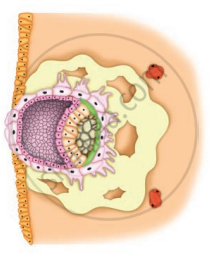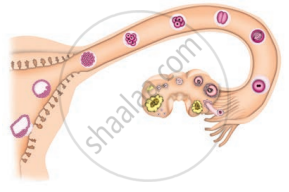Advertisements
Advertisements
प्रश्न
Find the odd one out:
Amoeba, Euglena, Planaria, Paramoecium
उत्तर
Planaria is flatworm which belongs to phylum Platyhelminthes.
Amoeba, Euglena, and Paramoecium are protozoans.
APPEARS IN
संबंधित प्रश्न
Name the scientist who put forward the most popular model of DNA.
What is DNA?
Where is DNA found in a cell ?
Why is variation beneficial to the species but not necessarily for the individual?
Why is DNA copying an essential part of the process of reproduction?
Match items in Column I with those in Column II:
| Column I | Column II | ||
| (a) | Bud | (i) | Maple |
| (b) | Eyes | (ii) | Spirogyra |
| (c) | Fragmentation | (iii) | Yeast |
| (d) | Wings | (iv) | Bread mould |
| (e) | Spores | (v) | Potato |
| (vi) | Rose |
A spore-producing organism is ______.
Which type of reproduction :
does not involve gametes?
Name two animals which reproduce asexually.
What is a clone? Why do offsprings formed by asexual reproduction exhibit remarkable similarity?
What are the two general methods of reproduction in organisms?
Reproduction is essential for living organisms in order to ______
The offsprings formed by asexual reproduction method have greater similarity among themselves because :
(i) asexual reproduction involves only one parent
(ii) asexual reproduction involves two parents
(iii) asexual reproduction involves gametes
(iv) asexual reproduction does not involve gametes
(a) (i) and (ii)
(b) (i) and (iii)
(c) (ii) and (iv)
(d) (i) and (iv)The offsprings formed by asexual reproduction method have greater similarity among themselves because :
(i) asexual reproduction involves only one parent
(ii) asexual reproduction involves two parents
(iii) asexual reproduction involves gametes
(iv) asexual reproduction does not involve gametes
(a) (i) and (ii)
(b) (i) and (iii)
(c) (ii) and (iv)
(d) (i) and (iv)
In asexual reproduction, two offsprings having the same genetic material and the same body features are called :
(a) callus
(b) twins
(c) clones
(d) chromosomes
What type of fertilisation takes place in fish?
Bryophyllum can reproduce by its ______.
Explain the term Reproduction.
Name the factors which take part in this process.
Answer the following question.
The growing size of the human population is a cause of concern for all people. The rate of birth and death in a given population will determine its size. Reproduction is the process by which organisms increase their population. The process of sexual maturation for reproduction is gradual and takes place while general body growth is still going on. Some degree of sexual maturation does not necessarily mean that the mind or body is ready for sexual acts or for having and bringing up children. Various contraceptive devices are being used by human beings to control the size of the population.
(a) List two common signs of sexual maturation in boys and girls.
(b) What is the result of reckless female foeticide?
(c) Which contraceptive method changes the hormonal balance of the body?
(d) Write two factors that determine the size of a population.
Which of the following types require pollinator but the result is genetically similar to autogamy?
The number of nuclei present in a zygote is _______.
Multiple choice question.
Which of these is the male reproductive organ in humans?
______ is an example of helobial endosperm.
Which is the most common type of endosperm in angiospermic families?
Seminal fluid is ______ in nature.
Nervous system develops from ______ of embryonic layer.
What is the function of inner cell mass?
What are the causes for the extinction of animals?
Reproductive part of a plant is ______.
The plant which propagates with the help of its leaves is ______.
Identify the chromosome number of the endosperm in the following case. In an angiosperm a female plant having 2n = 24 is crossed with a male plant having 2n = 12.
Assertion and Reason types of Question.
Assertion: In Banyan prop roots grow horizontally from the tree.
Reason: They give additional support to the tree.
Assertion and Reason types of Question.
Assertion: Corm is a condensed form of Bulb.
Reason: It has dry and fleshy scale leaves.
Observe the following figures.
 |
 |
 |
|
| (a) | (b) | (c) | (d) |
- Identify the stages (a) to (d) in figure during development of human baby.
- Arrange the stages in correct sequence of development.
- Explain the development that takes place in any one stage.
The statement ‘nothing lives forever, yet life continues’ illustrates the role of ______.

